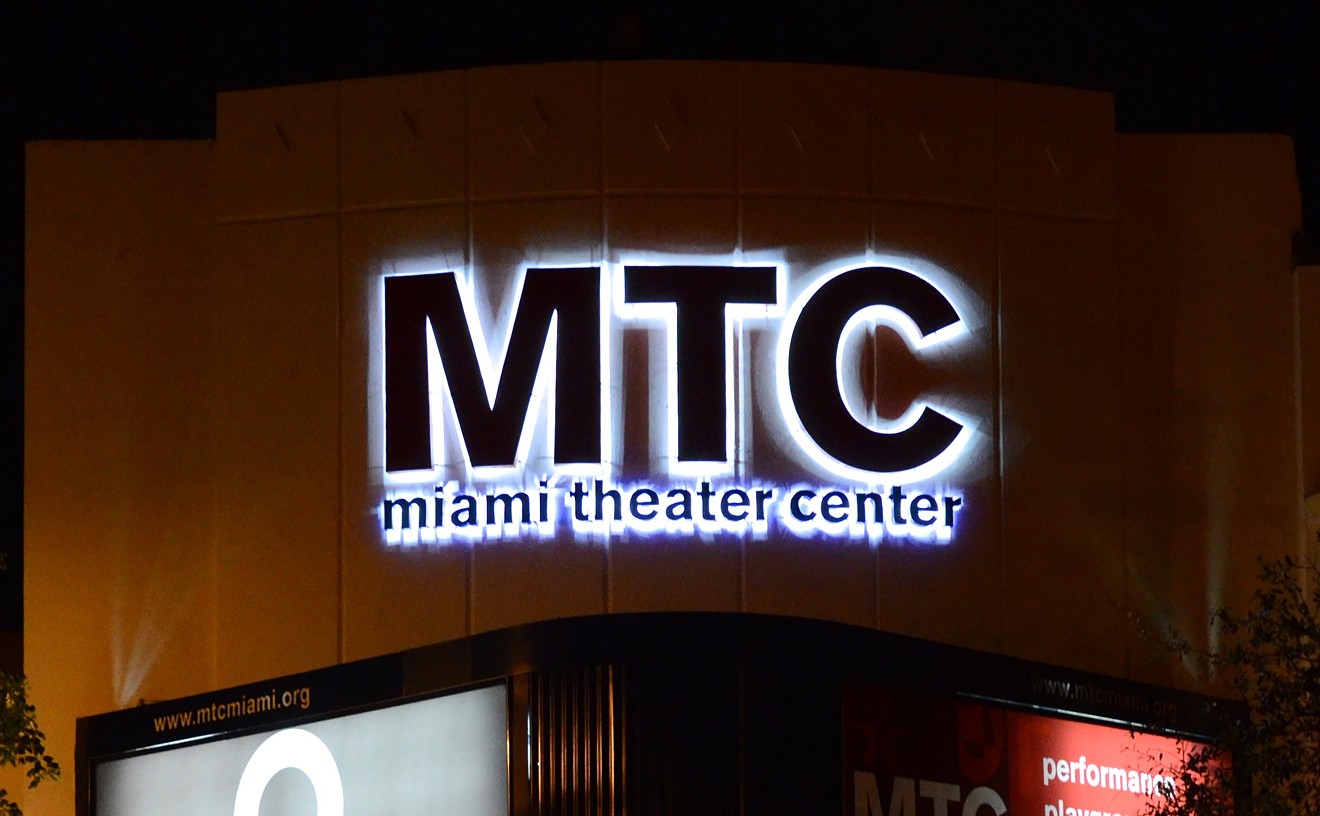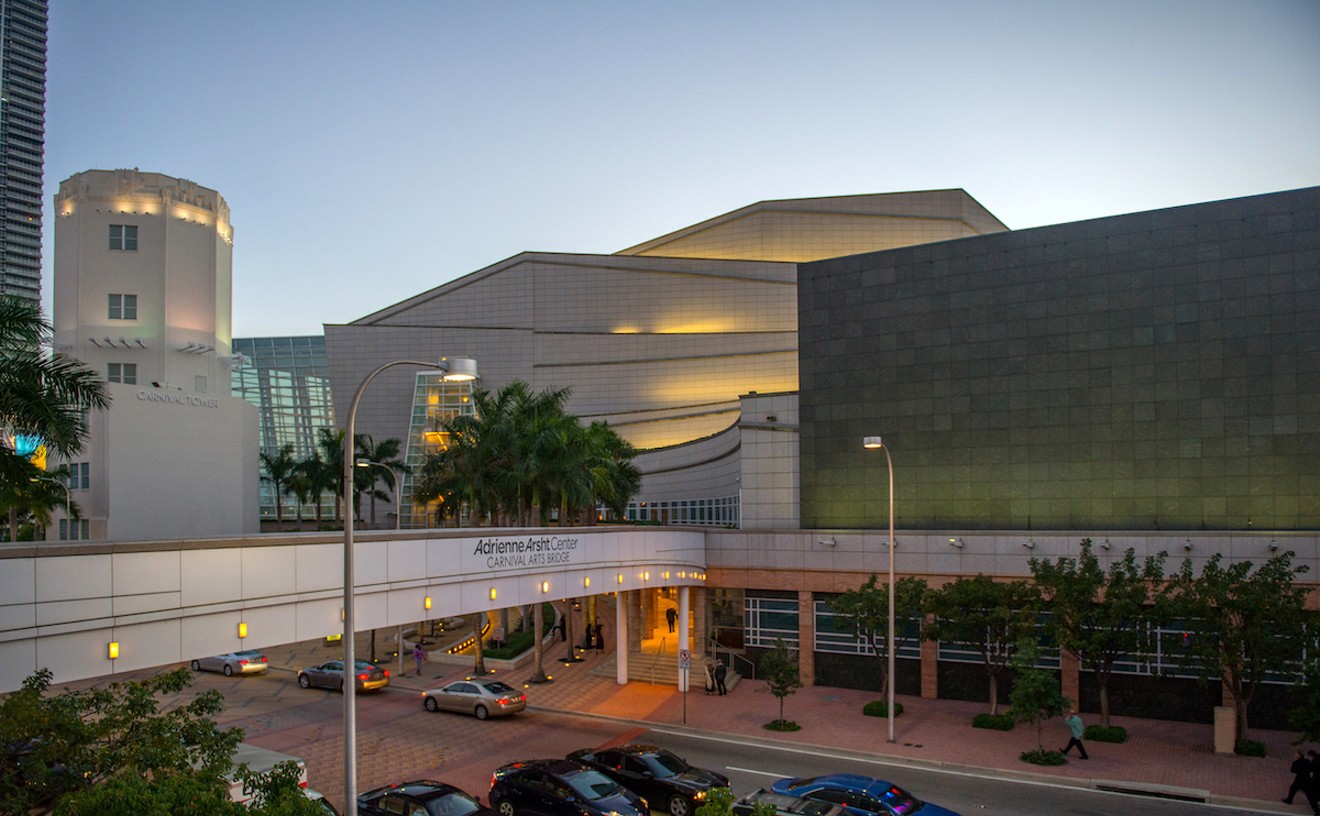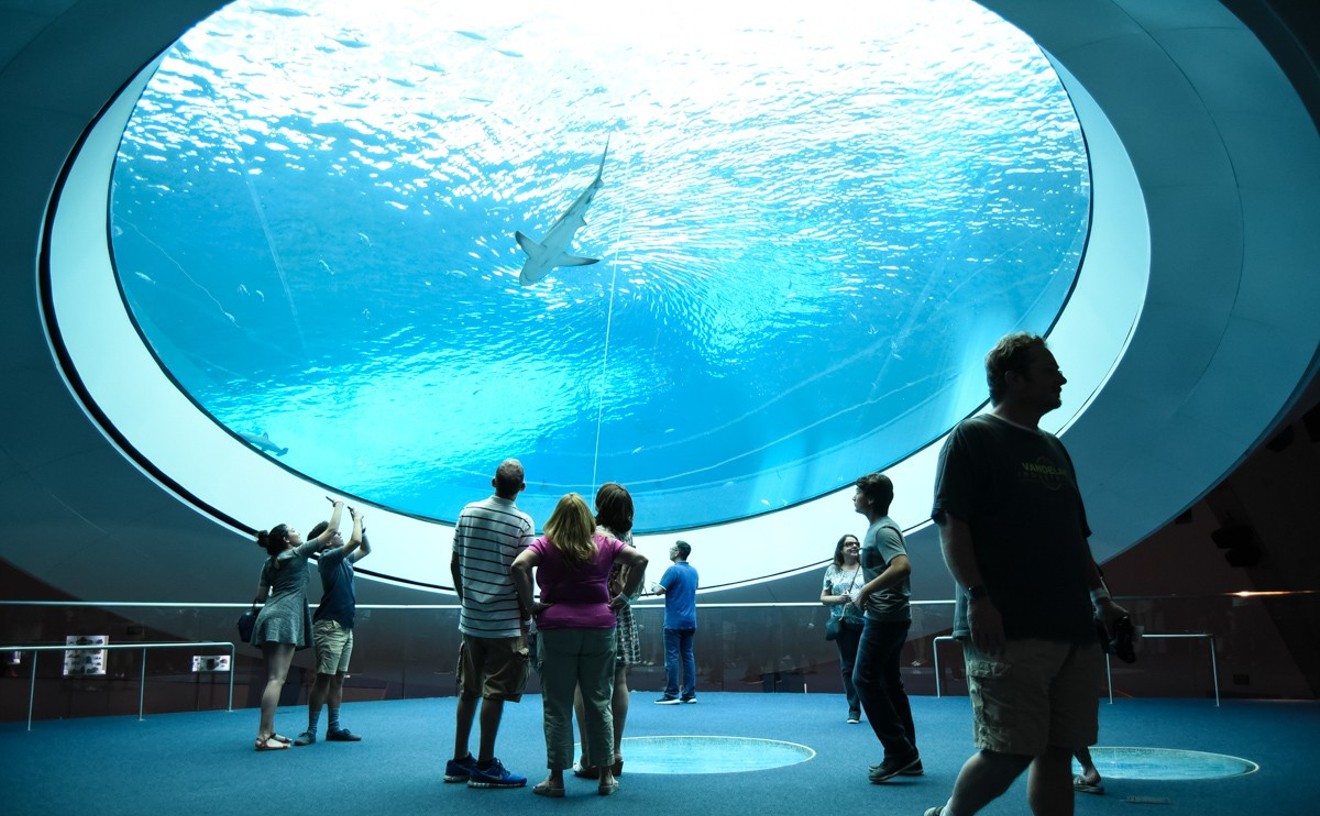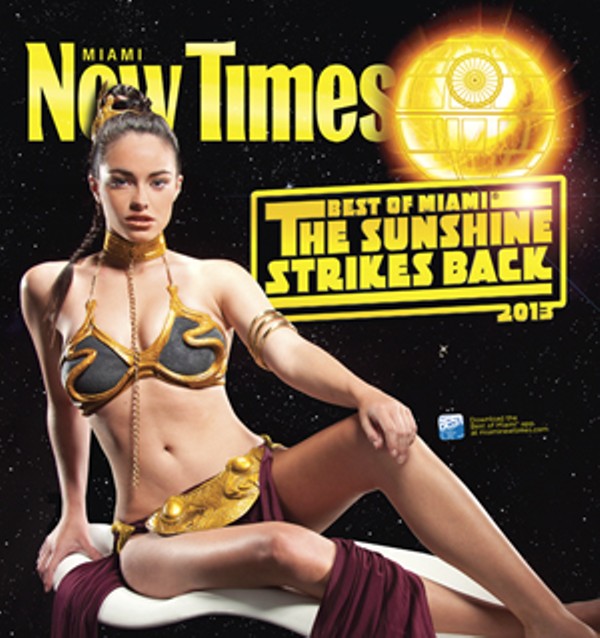The crux of Death and Harry Houdini is the titular magician's lifelong battle with death — his perpetual desire to cheat his demise. But beyond that, nothing about the story of this visiting production from the House Theatre of Chicago sticks out. The dialogue and thinly explored romance certainly won't win any awards. But what does impress is the spectacle. The House Theatre specializes in stylized, innovative theatrical experiments, where sound and design elements break new ground. Death and Harry Houdini, which launched the company in 2001 and is continually revived by popular demand, epitomizes its MO. It was a genuine magic show as much as a play, with Dennis Watkins, as Houdini, performing both close-up tricks and ambitious feats, from walking barefoot on a stream of broken glass to escaping a locked straitjacket, swallowing razor blades, and dangling in a booth of water. Video projection, smoke machines, stilt walkers, inspired choreography, colorful costumes, and fun audience participation further cemented an unforgettable sensorial experience.
Best Production from an Out-of-town Company
Death and Harry Houdini
Best Production from a New Company
Three Sisters

The PlayGround Theatre's transformation from an ambitious children's theater to an ambitious adult theater — rechristened Miami Theater Center — should have surprised no one familiar with its previous work. But its debut production of Anton Chekhov's Three Sisters pulled so many avant-garde surprises on its audience that it somehow honored the 1900 text while modernizing it and streamlining the theatrical experience to new heights. The unpredictable, period-spanning costumes, up-close addresses to the audience, modern slang, and music translated Chekhov's timeless words into a more contemporary context. And while choreographing a staggering 17-member cast, director Stephanie Ansin used every inch of the largely unadorned industrial-style space, from the aisles to a sprawling three-room set design, parts of which could be accessed only through an intimate seating area that rotated on a pivot. The complicated and airy mise en scène resulted in some occasional problems with spectators' sight lines, but a spectacular experiment beats out a safe, polite success any day.
- 9806 NE Second Ave., Miami Shores, 33138 Map
- 305-751-9550
- mtcmiami.org
Best Set Design
I Am My Own Wife

Everybody on the South Florida theater scene knows Michael McKeever can write. His plays scoop up statuettes every awards season. But this production heralded a new revelation for the prolific actor/playwright: He can design breathtaking sets, too. As aesthetically innovative as it was thematically expressive, his vision for the museum of transvestite German antiquarian Charlotte von Mahlsdorf was that of an oversized dollhouse, compartmentalized into segments like much of the character's fascinating biography. The objects themselves exuded a murky and sepia-toned nostalgia: A gramophone and accompanying painting of Nipper the dog, a stately grandfather clock, a misty chandelier. Working in inseparable tandem with Luke Klingberg's lighting design — which elevated the set to dramatic heights of florid expressionism — McKeever's construction lurked like a behemoth behind Tom Wahl's multi-character tour de force, a constant reminder that his/her past was always present.
- 1300 Biscayne Blvd., Miami, 33132 Map
- 305-949-6722
- arshtcenter.org
Best Lighting Design
The Turn of the Screw
When it comes to South Florida theatergoers — many of whose bedtimes are, let's just say, on the early side — there's always a risk of blanketing a show in such extended darkness that patrons are already off to see the sandman by the end of Act I. But Margaret Ledford, who also directed this assured production of The Turn of the Screw, took that risk and ran with it, thriving on darkness and the perennial sense of unease its presence implies. Never seeing the full picture is vital to The Turn of the Screw's success as a psychological mystery, and Ledford's decisions created a shrouded atmosphere that would be attractive to any wayward ghost. The show looked like Henry James' novella reads, with the sense of harrowing visions obscured by unreliable candlelight. We saw into the soul of Katherine Amadeo's frightened governess through the light that isolated her visage, suggesting, to paraphrase James, the inner chamber of her dread.
- 11300 NE Second Ave., Miami Shores, 33161 Map
- www.barry.edu/fine-arts/
Best Theater for Drama
GableStage at the Biltmore
It's been another banner year for Coral Gables' theatrical powerhouse, GableStage, with Joseph Adler and company mounting superlative regional productions of some of Broadway's best and brightest plays of the past five years. It was a period that included a caustic David Mamet legal drama about a taboo subject (Race); an unforgettable foray into a Congolese brothel (Ruined); a dynamic study of S&M, literature, and gender relations (Venus in Fur); a tender and hilarious buddy comedy about a grieving bicyclist and his Marxist grandmother (4,000 Miles); and, most recently, a provocatively titled play about an unpredictable love triangle (Cock). All of that plus Hamlet, in a version of the antique masterpiece that felt as fresh and vital as the rest of the recent works. Casting-wise, Adler never rested on his laurels; rather than employ actors familiar with the Biltmore floodlights, he went with a number of breakthrough discoveries and risky decisions that paid off, fostering a new generation of talent while enriching audiences with hot-button plays they wouldn't see anywhere else.
- 1200 Anastasia Ave., Coral Gables, 33134 Map
- 305-446-1116
- www.gablestage.org
Best New Theater
Miami Theater Center

When Miami Shores' PlayGround Theatre became the Miami Theater Center (MTC) in June 2012, it didn't just get a name change. It got a new mission: to offer quality theatrical performances to Miami-Dade communities north of Wynwood. And from the beginning, MTC has succeeded at exactly that. Its first show, Chekhov's Three Sisters, was ambitious in both staging and content. The chilly Russian tale of three women's dashed dreams doesn't exactly scream Miami. But MTC founder and artistic director Stephanie Ansin's masterful staging, including seating on a platform that swiveled around the stage, literally moving its audience, earned rave reviews. They haven't stopped since. And that's even more impressive, given MTC's proclivity toward difficult subject matter. This year, MTC has also staged Hate! An American Love Story, addressing the important but challenging issue of bigotry, and Pie Solo, the local dancer and choreographer Pioneer Winter's one-man show in which he appears in a jock strap and performs a tap dance while sitting on a toilet. The theater's partnership with O Cinema, bringing indie and classic movies to Miami Shores, is just icing on the cake. Miami Theater Center has proven that North Miami-Dade, too, can support the edgier side of the performing arts.
- 9806 NE Second Ave., Miami Shores, 33138 Map
- 305-751-9550
- mtcmiami.org
Best World Premiere
A Man Puts on a Play
Antonio Amadeo, local actor and impresario of the Naked Stage in Miami Shores, thrives on producing unique experiences at his 43-seat black-box theater and uses the space's limitations to his artistic advantage. This was never more apparent last year than in A Man Puts on a Play, Amadeo's debut as a playwright. The self-reflexive meta-play was a show like no other, a touching familial dramedy preceded by a semi-improvisatory exercise in set-design construction. In the first act, like magic, the ensemble cast transformed a bare stage before the audience's eyes into a fully functioning attic set, bolstered by their own light-hearted quips, endearing mistakes, and a potent jazz soundtrack. In the second act, whose dialogue was seen being rehearsed in the first, a simmering conflict between brothers played out in the now-constructed set. Anyone who didn't see this work missed an ingeniously sloppy experiment that revealed how at least some of the theatrical sausage is made.
- 11300 NE Second Ave., Miami Shores, 33161 Map
- www.barry.edu/fine-arts/
Best Musical
Fela!

Never has an exclamation point seemed more necessary to a title than that of Fela! Broadway's high-energy celebration of the life and music of Afrobeat innovator, Fela Kuti (Adesola Osakalumi). It made its long-awaited premiere at the Arsht Center, which was transformed into a subversive Nigerian nightclub circa 1977. Chronicling the musician's rise from middle-class African family to student of black liberation theology and the controversial fusion of jazz, funk, and activism that soon accompanied it, Fela! was a history lesson about the Afrobeat genre as much as its charismatic inventor — albeit a history lesson complete with pot-smoking, booty-shaking, and more motherfuckers than a Samuel L. Jackson retrospective. The wonderful references to the injustices of News Corporation, Monsanto, and Citizens United only cemented the continued relevancy of its lessons. But more than its story, Fela! was a triumph in form, with the impossibly good ensemble of dancers and onstage band of musicians creating an atmosphere of infectious exuberance that spilled out into the audience when Osakalumi prompted the entire Arsht throng of Fela fans and soon-to-be fans to rise from their seats and practice African dance moves.
- 1300 Biscayne Blvd., Miami, 33132 Map
- 305-949-6722
- arshtcenter.org
Best Comedian
Yamil Piedra
A male model wearing only black briefs strikes a pose against a white background. To the sounds of dramatic dubstep, he flexes, spins, and broods as the black-and-white camera spares viewers no detail of his physique. No, this isn't Calvin Klein's Super Bowl ad. It's Miami comedian Yamil Piedra's recent parody. The model is Piedra himself, sporting a bald head, full beard, and — how to put this nicely? — a big, round gut to drum up exposure for his new show, The Pretty Rock Project. Piedra, along with Johnny Trabanco, once performed as A Pair of Nuts, a comedy duo known for making viral videos that closed out the South Beach Comedy Festival in 2012. Trabanco and Piedra have since split, but Piedra is still working that multimedia angle. In The Pretty Rock Project, he combines traditional stand-up comedy with sketches in which he plays everything from a Toddlers & Tiaras-style pageant girl to a failed Criss Angel wannabe. He's also incorporated video into the show, and it's as funny-'cause-it's-true as anything A Pair of Nuts ever did. (See Piedra's commercial for the Sexecutive Hotel on Calle Ocho, featuring luxury amenities such as "a garbage can for throwing away garbage" and "a door for coming in and out of the room.") Hilarious, diversely talented, and utterly shameless, Piedra has evolved into Miami's own one-man comedy cabaret. We'll take that over some pretentious supermodel any day.
Best Comedy Venue
Miami Science Museum

What do a comedy club and a science museum have in common? No, that's not the opening to a joke (not even a lame one). It's a question that reveals the best, least-known, and most surprising comedy venue in South Florida: the Miami Science Museum. In 2012, with the help of Have-Nots Comedy, the museum hosted some of South Florida's most popular stand-up acts. Denver comedian Ben Kronberg — who has appeared on Comedy Central and late-night shows with Jimmy Kimmel and Carson Daly — and Nikki Glaser, a Last Comic Standing alum who has graduated to the weekly MTV show Nikki & Sara Live, are among the out-of-towners who made pilgrimages to MiaSci last year. But the comedy on the science-surrounded stage skews heavily toward the 305. Case in point: It's where foulmouthed Cuban puppet Pepe Billete made his stand-up debut. Best Comedian 2011 winner Nery Saenz also brought the chuckles last year, as did Best Comedian 2012 Dave Williamson, who recorded his first live comedy album in the space. The Miami Science Museum is getting a new home in 2015, and it's unclear whether the space will continue to host local and visiting comics; it is, after all, moving into a building constructed solely for the serious subject of science. So you'd better catch a stand-up set at the current space before, like many of the species chronicled in the museum's exhibits, it becomes extinct.
- 1101 Biscayne Blvd., Miami, 33132 Map
- 305-434-9600
- frostscience.org





